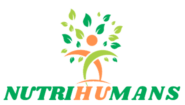Are eggs “guilty” of high cholesterol or not?
A study by Catherine J. Andersen, associate professor of Nutritional Sciences in the College of Agriculture, Health and Natural Resources, sought to overcome the limited range of standard clinical measures of previous work (eg, single biomarkers for heart disease, diabetes, body composition, inflammation, immune health, and anemia), to tease out participants’ pre-existing risk factors and get to the bottom of it.
As the scientist explained “our work helps to provide a comprehensive picture of the effects of egg intake in a young, healthy population using standard, common clinical biomarkers. We believe this allows for a better reduction to the general public.”
The findings were published in Nutrients . One group of participants consumed three egg whites a day, a second group ate three eggs in a 24-hour period, and a third group ate no eggs at all.
Blood samples showed a significant increase in choline when participants ate whole eggs daily. Choline is a key nutrient found in egg yolks and has been associated with a metabolite linked to heart disease. The study showed that the metabolite values did not change, despite the increase in choline.
The researchers saw no adverse changes in inflammation or blood cholesterol levels . They also found that eating whole eggs had less of a negative impact on markers associated with diabetes risk than eating egg whites.
Overall, participants had a higher nutrient density in their diet when they consumed whole eggs , in addition to a higher hematocrit – a measure of the density of red blood cells in the blood, which can decrease in anemia.
The most nutritious part of the egg
The part we throw away – yes, the shell! – is a source of pure calcium, a chemical element that helps us avoid osteoporosis and sleep better, while normalizing nerve and muscle function.
It also contains iron, copper, manganese, zinc, fluorine, phosphorus and various other useful components, while the membranes have substances that improve the elasticity of the joints.
In order to consume the shell safely, it must first be boiled to kill any potential bacteria. Then, put it in the oven for 10 to 15 minutes, at 100 degrees and finally pulverize it. Then we can add it wherever we want (e.g. in salads).
Just as we need to be careful with the quantities of eggs we consume so that they don’t become friends or enemies (the general limit is 3 a day ), so we also need to be careful about how much shell we eat. An adult needs 1 gram per day. The shell of an egg has 2 grams. If the tests show that our calcium is fine, obviously we don’t need the shell, since the excess is harmful.



